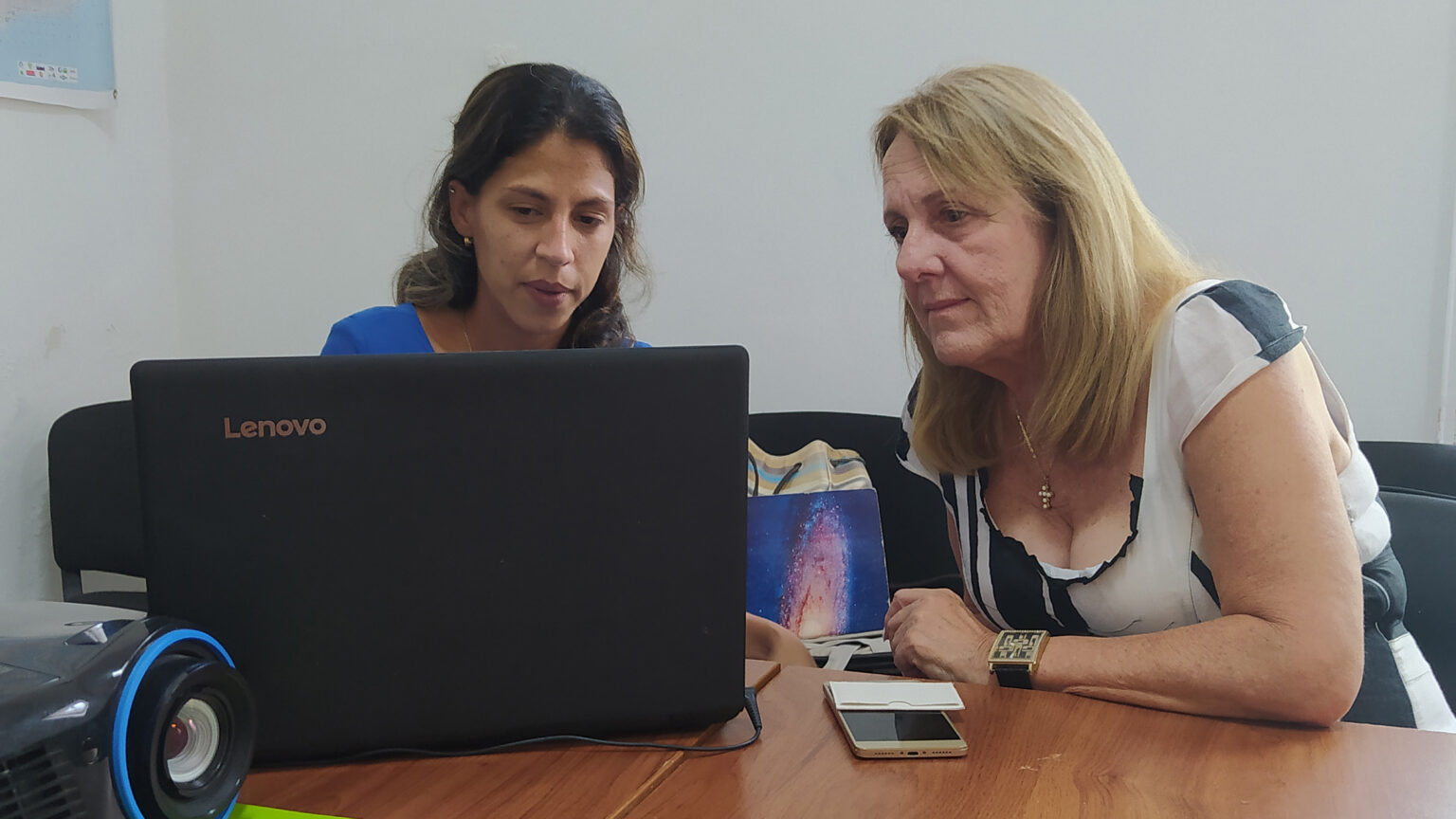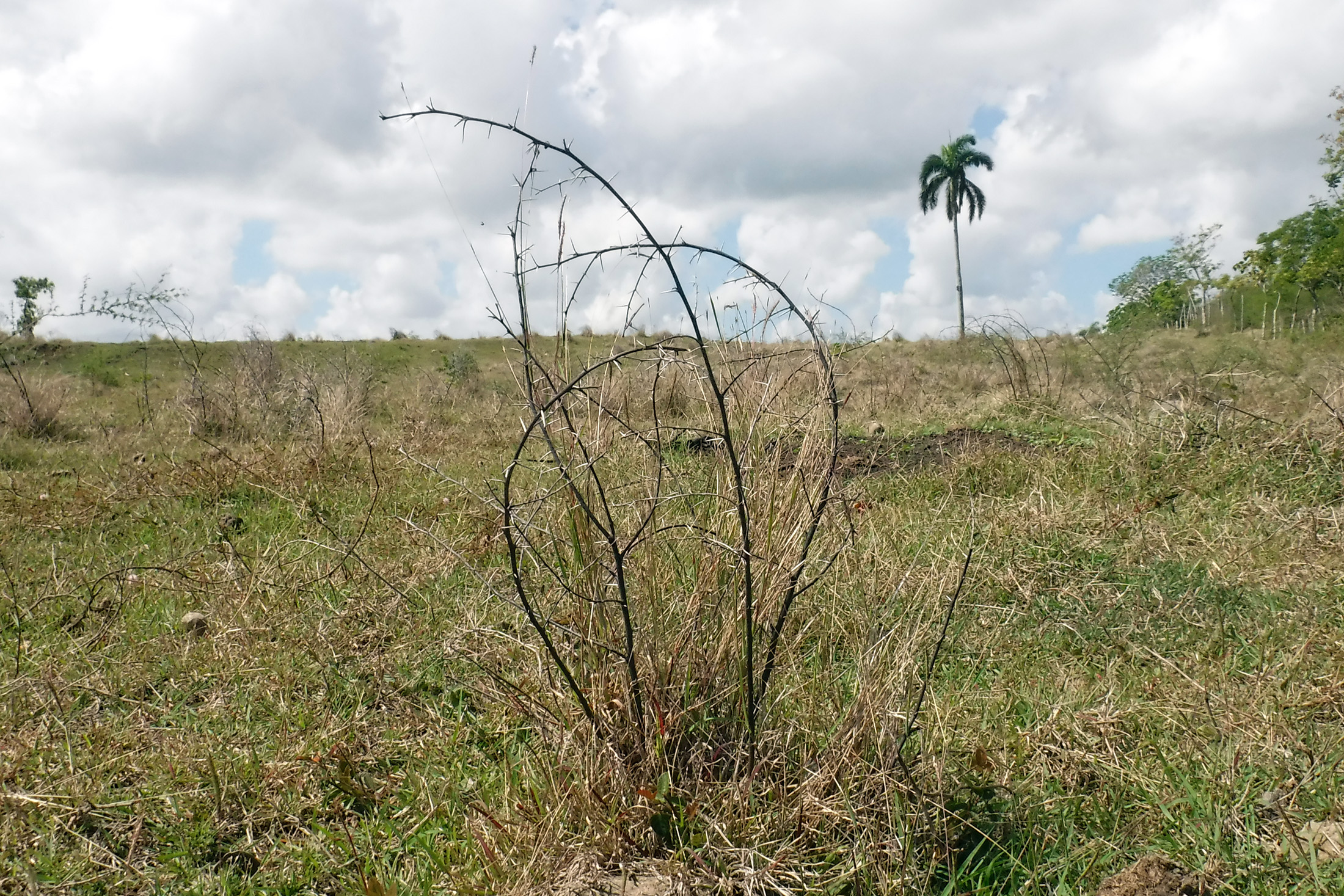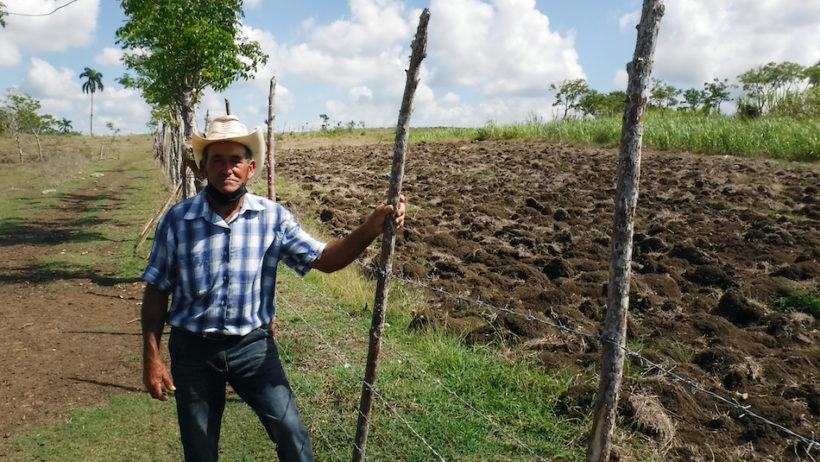Infestation by thorny bushes and infertile soil made it unwise to take a gamble on the land, but Cuban farmer José Antonio Sosa overruled these misgivings and gave life to the thriving La Villa farm on the outskirts of Havana.
“It was in very poor condition, covered with aroma (Vachellia farnesiana) and marabú (Dichrostachys cinérea), with little topsoil and lots of stones. People asked me how I was going to “get into” this. With an axe and machete, I cleared the undergrowth, clearing it in sections,” Sosa told IPS.
Now they alternate plots of different varieties of fruit, vegetables and tubers on some 14 hectares that this farmer received in usufruct from the state in 2010, as part of a government policy to reduce unproductive land and encourage food production.
These crops guarantee family self-consumption, as well as contributing to social programmes and sales to the community, after handing over part of the produce to the Juan Oramas Credit and Services Cooperative, which owns the farm located in the municipality of Guanabacoa, one of the 15 that make up the Cuban capital.
Backed by an assistant and his family, Sosa provides cow’s and goat’s milk, raises pigs and poultry, and already dreams of cultivating freshwater fish in a small lagoon in the not-too-distant future.
The Villa is in the process of being certified as a “sustainably managed farm”. Both the farm and Sosa represent one of the examples of a growing effort by Cuban small farmers to rescue degraded land and incorporate friendly management for soils and crops.
The rescue of unproductive and/or degraded land also connects to the need to increase domestic food security in a country highly dependent on food imports whose rising prices maintain a domestic market with unsatisfied needs and cycles of shortages such as the current one.
“The guideline foresees the implementation of new financial economic instruments or the improvement of existing ones by 2030, in order to achieve neutrality in land degradation”: Jessica Fernández.
At the end of 2021, Cuba counted 226,597 farms in its territory, 1202 of them with agroecological status and 64% of the total – some 146,000 – incorporated into the agroecological movement in the categories of beginning or in transformation, according to official statistics.
For Sosa, who has been known as “Che” since he was a child, the use of natural fertilisers and animal excrement has made a difference in the recovery and transformation of soils.
“It is also important to pay attention to the way crops are cultivated or harvested, to avoid compaction,” the farmer said.
Studies recognise that changes in land use, inadequate agricultural practices (including the intensive use of agricultural machinery and irrigation), the increase in human settlements and infrastructure, and the effects of climate change, are accelerating factors in desertification and soil degradation in this Caribbean Island nation of 11.2 million people.
Sosa emphasised the importance of paying attention to the direction of the land for planting, and the use of live or dead barriers “so that when it rains, the water does not wash the topsoil down to low-lying areas”.

Cucumbers grown in an agroecological way on the La Villa farm, located in the municipality of Guanabacoa, one of the 15 municipalities that make up Havana, Cuba. Photo: Jorge Luis Baños / IPS
Drought and climate change
With a surface area of 109,884 square kilometres, 77 percent of the soils in this archipelago are classified as not very productive.
They are influenced by one or more adverse factors such as erosion, salinity, acidity, poor drainage, low fertility and organic matter content, or poor moisture retention.
The most recent statistics reveal that 35% of the national surface has some degree of degradation.
But at 71, Sosa, who has worked in the countryside all his life, attests that climate change is an inclement factor for soils.
“The rain cycles have changed. When I was a boy in the early 1960s, my father would plant malanga (Colocasia esculenta, a locally consumed tuber) in March, around the 10th or so, and by the 15th it would be raining heavily. This is no longer the case. This April was very dry, especially at the end of the month and the beginning of May,” he recalled.
He also referred to the decrease in crop yields and quality, “as soils become hotter and water is scarce”.
Various studies on the subject corroborate important changes in Cuba’s climate in recent years, related to the increase in the average annual temperature, the decrease in cloud cover and stronger droughts, among other phenomena.
According to forecasts, the country’s climate will tend towards less precipitation and longer periods without rain, and by 2100 the availability of water potential could be reduced by more than 35%.
But more intense hurricanes, the atmospheric phenomena that can dump half of the average annual rainfall in 48 hours, with consequent stress and heavy soil erosion, are also expected.
Although the least productive lands are located in the east, and Cuba’s so-called semi-desert is confined to parts of the southern coast of Guantánamo, the easternmost of the 15 provinces, forecasts suggest that the semi-arid zones could increase and move westwards.

Gloria Gómez (right), director of Natural Resources, Prioritised Ecosystems and Climate Change, and Jessica Fernández, head of the Climate Change Department of the General Directorate of Environment of the Cuban Ministry of Science, Technology and Environment, confirm the government’s intention to promote the use of credits, insurance and taxes as incentives for farmers to improve their soils. Photo: Luis Brizuela / IPS
Goals
In addition to being a State Party to the United Nations Convention to Combat Desertification, Cuba has been promoting the Country Partnership Programme, also known as the National Action Programme to Combat Desertification and Drought (Programa de Acción Nacional de Lucha contra la Desertificación y la Sequía), since 2008. Sustainable land management (CPP OP-15).
The Cuban government is also committed to the 2030 Agenda and its 17 Sustainable Development Goals (SDGs), agreed within the United Nations in 2015.
In SDG 15, the one on Terrestrial Ecosystem Life, target 15.3 calls to “combat desertification, rehabilitate degraded land and soils, including land affected by desertification, drought and floods and strive towards a land degradation-neutral world”.
You may also be interested in:
- Cuba protects its soils for greater food and environmental sustainability
- Cuba recovers its soils with Green Climate Fund support
- Cuban farm develops handmade sustainability
According to Sosa, the increase in soil degrading factors requires more efforts to restructure its physical and chemical characteristics.
In addition, he said, mechanisms should be sought to prioritise irrigation, considering that many sources dry up or decrease in supply due to climate variability.
“In my case, I irrigate in the lower part with a small system connected to the lagoon. But in the higher areas of the farm I depend on rainfall,” he said.
The construction of tanks or cisterns to collect rainwater, in addition to the traditional reservoirs, are ideal alternatives for this Caribbean country, with short, low-flow rivers, and highly dependent on rainfall, which is more abundant in the so-called rainy season from May to October.
But the experiences of farmers like Sosa require greater incentives; there is a need for more training on the importance of sustainable management techniques, and for their generalisation to find economic returns, as well as financial and tax support.

The use of natural fertilisers and animal excrement is one of the keys to the recovery and transformation of the once degraded and thorny bush-covered soils of what is now the La Villa farm in the municipality of Guanabacoa, Havana, Cuba. 17 May 2022.Photo: Jorge Luis Baños/IPS
In 2019, Cuba approved the National Target Setting Programme for Land Degradation Neutrality.
“The guideline foresees implementing new financial economic instruments or improving existing ones by 2030, in order to achieve neutrality in land degradation,” Jessica Fernández, head of the Climate Change department of the Ministry of Science, Technology and Environment, told IPS in an interview with IPS.
In this sense, the plan is to promote the use of credits, insurance and taxes as economic incentives for producers, based on soil improvement and conservation, and to account for current spending on environmental solutions in order to determine the total expenditure for soil conservation, she added.
“We are in conciliations and studies with the Central Bank of Cuba to gradually introduce green banking,” Gloria Gómez, director of natural resources, prioritised ecosystems and climate change at the ministry, told IPS.
“This service will seek to promote and finance projects that provide solutions to environmental problems through credits with lower interest rates, longer repayment periods, incentives for green products and services, and eco-labelling,” she said.
Since 2000, the Ministry of Agriculture has been developing the National Programme for Soil Improvement and Conservation, and in January the Policy for Soil Conservation, Improvement and Sustainable Management and the Use of Fertilisers came into force.
In turn, the Cuban State’s plan to combat climate change, better known as Tarea Vida, in force since 2017, also includes actions to mitigate soil vulnerabilities.
In the last five years, the principles of Sustainable Land Management (SLM) have been applied to more than 2525 hectares, while one million of the country’s more than six million hectares of agricultural land have received some kind of benefit, statistics show.
Other national priorities are related to increasing the forested area to 33%, extending the areas under SLM by 150,000 hectares and improving 65% of the soils in the agricultural area by the end of the current decade.










